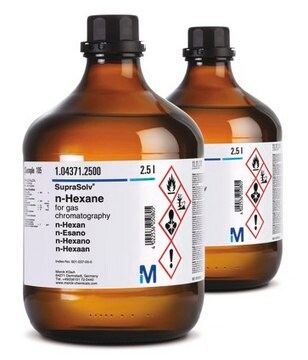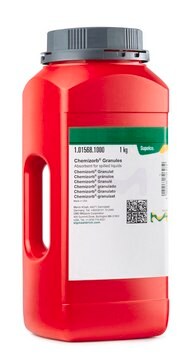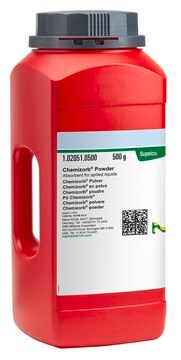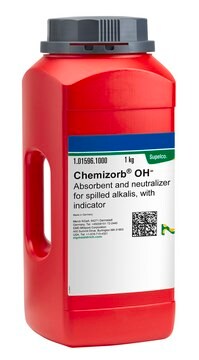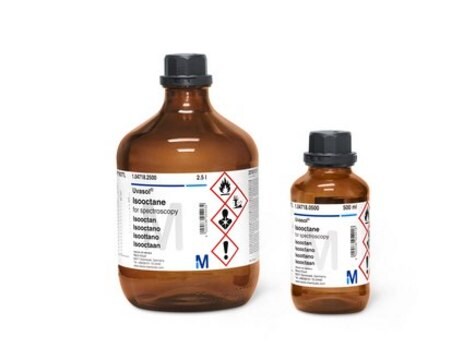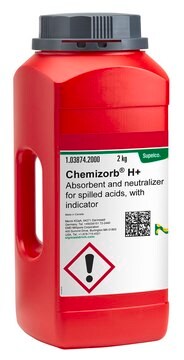1.01843
tert-Butyl methyl ether
EMPLURA®
Synonyme(s) :
tert-Butyl methyl ether, Methyl tert-butyl ether, MTB, MTBE
About This Item
Produits recommandés
Pression de vapeur
268 hPa ( 20 °C)
Niveau de qualité
Gamme de produits
EMPLURA®
Essai
≥99% (GC)
Forme
liquid
Température d'inflammation spontanée
460 °C
Puissance
>2000 mg/kg LD50, oral (Rat)
>2000 mg/kg LD50, skin (Rabbit)
Limite d'explosivité
1.5-8.5 % (v/v)
Impuretés
≤0.001% Free acid (as CH3COOH)
≤0.005% Peroxide (as H2O2)
≤0.05% Water
Résidus d'évap.
≤0.005%
Viscosité cinématique
0.464 cSt(20 °C)
pb
55.3 °C/1013 hPa
Pf
-108.6 °C
Température de transition
flash point -28 °C
Solubilité
42 g/L
Densité
0.74 g/cm3 at 20 °C
Température de stockage
2-30°C
InChI
1S/C5H12O/c1-5(2,3)6-4/h1-4H3
Clé InChI
BZLVMXJERCGZMT-UHFFFAOYSA-N
Vous recherchez des produits similaires ? Visite Guide de comparaison des produits
Description générale
Application
- Evidence for HOOO radicals in the formation of alkyl hydrotrioxides (ROOOH) and hydrogen trioxide (HOOOH) in the ozonation of C-H bonds in hydrocarbons.: This research used tert-Butyl methyl ether to investigate the formation of hydrotrioxides and hydrogen trioxide in the ozonation of hydrocarbons, providing insights into radical chemistry and ozonation processes (Cerkovnik et al., 2002).
- Determination of ochratoxin A in baby food by immunoaffinity column cleanup with liquid chromatography: interlaboratory study.: The study employed tert-Butyl methyl ether in the cleanup process for detecting ochratoxin A in baby food, demonstrating its effectiveness in ensuring food safety through reliable analytical methods (Burdaspal et al., 2001).
- Sensitive high-performance liquid chromatography/mass spectrometry method for determination of steviol in rat plasma.: This paper highlights the use of tert-Butyl methyl ether in developing a sensitive HPLC/MS method for analyzing steviol in biological samples, showcasing its application in pharmacokinetic and toxicological studies (Wang et al., 2004).
- Comparative fatty acid selectivity of lipases in esterification reactions with glycerol and diol analogues in organic media.: The research employed tert-Butyl methyl ether to investigate lipase selectivity in esterification reactions, illustrating its importance in biocatalysis and industrial applications of enzymatic processes (Lee & Parkin, 2000).
- Analysis of coumarin 7-hydroxylation activity of cytochrome P450 2A6 using random mutagenesis.: This study utilized tert-Butyl methyl ether to analyze enzyme activity in cytochrome P450, demonstrating its utility in biochemical assays and the study of enzyme kinetics (Kim et al., 2005).
Remarque sur l'analyse
Identity (IR): conforms
Free acid (as CH₃COOH): ≤ 0.001 %
Density (d 20 °C/ 4 °C): 0.740 - 0.742
Peroxide (as H₂O₂): ≤ 0.005 %
Evaporation residue: ≤ 0.005 %
Water: ≤ 0.05 %
Informations légales
Mention d'avertissement
Danger
Mentions de danger
Conseils de prudence
Classification des risques
Flam. Liq. 2 - Skin Irrit. 2
Code de la classe de stockage
3 - Flammable liquids
Classe de danger pour l'eau (WGK)
WGK 1
Point d'éclair (°F)
-18.4 °F - closed cup
Point d'éclair (°C)
-28 °C - closed cup
Certificats d'analyse (COA)
Recherchez un Certificats d'analyse (COA) en saisissant le numéro de lot du produit. Les numéros de lot figurent sur l'étiquette du produit après les mots "Lot" ou "Batch".
Déjà en possession de ce produit ?
Retrouvez la documentation relative aux produits que vous avez récemment achetés dans la Bibliothèque de documents.
Notre équipe de scientifiques dispose d'une expérience dans tous les secteurs de la recherche, notamment en sciences de la vie, science des matériaux, synthèse chimique, chromatographie, analyse et dans de nombreux autres domaines..
Contacter notre Service technique

